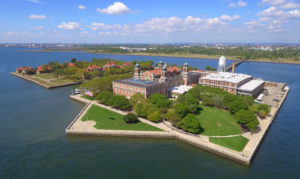

United States
Reconstruction began in earnest following the war. While President Lincoln attempted to foster friendship and forgiveness between the Union and the former Confederacy, his assassination on April 14, 1865 drove a wedge between North and South again. Republicans in the federal government made it their goal to oversee the rebuilding of the South and to ensure the rights of African Americans. They persisted until the Compromise of 1877 when the Republicans agreed to cease protecting the rights of African Americans in the South in order for Democrats to concede the presidential election of 1876.
Southern white Democrats, calling themselves “Redeemers“, took control of the South after the end of Reconstruction, beginning the nadir of American race relations. From 1890 to 1910, the Redeemers established so-called Jim Crow laws, disenfranchising most blacks and some poor whites throughout the region. Blacks would face racial segregation nationwide, especially in the South. They also occasionally experienced vigilante violence, including lynching.
Further immigration, expansion, and industrialization:
The United States fought Indian Wars west of the Mississippi River from 1810 to at least 1890.[104] Most of these conflicts ended with the cession of Native American territory and their confinement to Indian reservations. Additionally, the Trail of Tears in the 1830s exemplified the Indian removal policy that forcibly resettled Indians. This further expanded acreage under mechanical cultivation, increasing surpluses for international markets. Mainland expansion also included the purchase of Alaska from Russia in 1867. In 1893, pro-American elements in Hawaii overthrew the Hawaiian monarchy and formed the Republic of Hawaii, which the U.S. annexed in 1898. Puerto Rico, Guam, and the Philippines were ceded by Spain in the same year, following the Spanish–American War. American Samoa was acquired by the United States in 1900 after the end of the Second Samoan Civil War. The U.S. Virgin Islands were purchased from Denmark in 1917.
Rapid economic development during the late 19th and early 20th centuries fostered the rise of many prominent industrialists. Tycoons like Cornelius Vanderbilt, John D. Rockefeller, and Andrew Carnegie led the nation’s progress in the railroad, petroleum, and steel industries. Banking became a major part of the economy, with J. P. Morgan playing a notable role. The American economy boomed, becoming the world’s largest. These dramatic changes were accompanied by social unrest and the rise of populist, socialist, and anarchist movements. This period eventually ended with the advent of the Progressive Era, which saw significant reforms including women’s suffrage, alcohol prohibition, regulation of consumer goods, and greater antitrust measures to ensure competition and attention to worker conditions.
